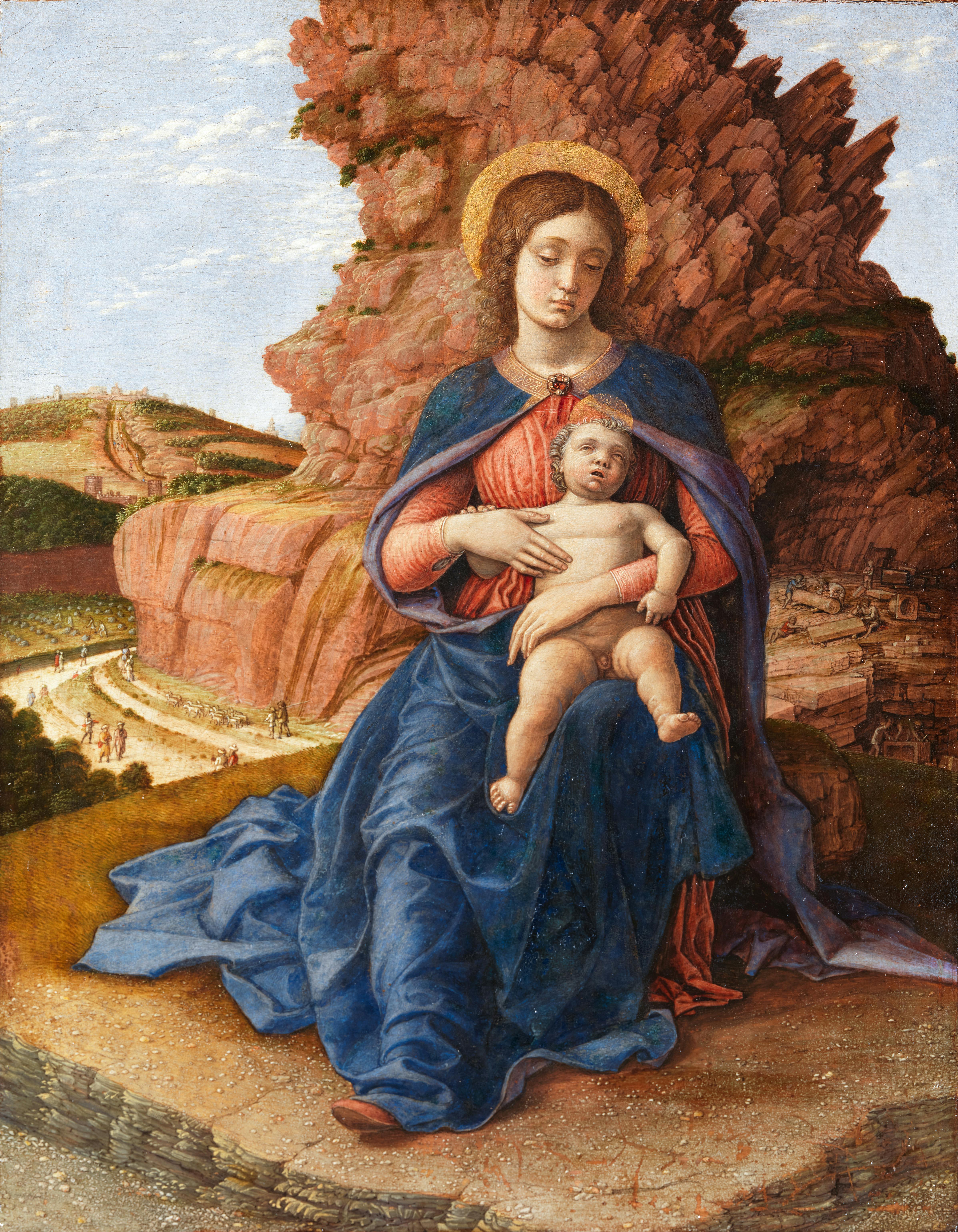Virgin and Child ('Madonna of the Caves')
Andrea Mantegna (Isola di Carturo (PD) 1431-Mantua 1506)
In a rugged landscape, Mary is sitting on a seat carved into the rock with a sad and pensive expression, while with her right hand, she points to her son Jesus as in the ancient Byzantine model of the Hodegetria, 'She who shows the Way'. Mary's sad face matches the almost suffering face of Jesus, who raises his eyes and opens his mouth, as in a lament or invocation. The title by which this work is known, Madonna of the Caves, derives from the background depiction of caves and rock walls from which various stone masons are taking material to carve columns and a sarcophagus. These details acquire a symbolic meaning in relation to the Christological subject: the column foreshadows the Flagellation and Passion of Christ, while the sarcophagus alludes to the burial of the dead Christ, which precedes the Resurrection. The mountain setting is probably an allusion to Mount Golgotha, where the crucifixion took place. These elements interpenetrate with the sadness expressed by the Virgin and Child.
On the other hand, the choice to depict quarries, a scenario much admired by Giorgio Vasari who described the painting in his work Life of Andrea Mantegna (1568 edition), also appears to be a sort of homage that Mantegna seems to be paying to the Greco-Roman civilization, as he imagined the feverish activity of workers who in antiquity used to build temples and sculpt friezes and statues, in full harmony with the ideas of Renaissance. Mantegna had the chance to deepen his knowledge of ancient art during his stay in Rome, around 1488. It was probably in Rome, as claimed by Giorgio Vasari, that the painting now in the Uffizi was executed. It is possible that the pose of the Virgin's legs was inspired by ancient statues.
The small size of the Madonna of the Caves suggests an easily transportable work, intended for private devotion, as it is also suggested by the finishing on the front side of the panel, which is decorated with a motif that imitates marble. Despite the small format, the figures have a marked monumentality, and some details seem to presuppose a privileged viewpoint from below, such as the construction of the child's figure and the visible sole of the shoe worn by Mary.
According to Vasari, in 1568 the panel was already in the Medici collections and belonged to Francesco, the future Grand Duke of Tuscany. It has been preserved at the Uffizi at least since 1704.
R. Lightbown, Mantegna, with a complete catalogue of paintings, drawings and prints, Oxford 1986, pp. 435-436; M. Lucco in Mantegna a Mantova 1460-1506, a cura di M. Lucco, Milano 2006, p. 82, cat. 8; S. Hofmann in Andrea Mantegna. Rivivere l'antico, costruire il moderno, Torino, 2019, p. 158
